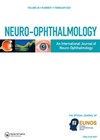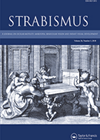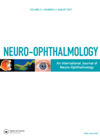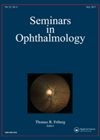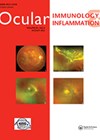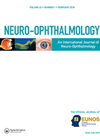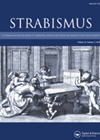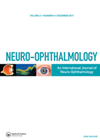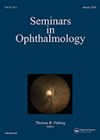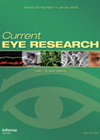
Journal Reviews
Do occult neuroretinitis and non-arteritic anterior ischaemic optic neuropathy differ in presentation?
This study evaluates differences between neuroretinitis and non-arteritic anterior ischaemic optic neuropathy (NAAION) in terms of patient demographics, clinical presentation, and optical coherence tomography (OCT) findings. Medical records of patients with a final diagnosis of occult neuroretinitis or NAAION were...
Macular measurements for amblyopic eyes
This study aimed to evaluate the macular parameters including foveal avascular zone (FAV) size and vessel density in amblyopia vs fellow eyes. The study included 23 unilateral amblyopia children (9.86 ±3.12 years; 52.2% female) and non-amblyopia control eyes (8.67 ±2.06...
Use of international interocular difference thresholds for optic neuritis diagnosis in clinical practice
Multiple sclerosis (MS) is the most common non-traumatic cause of disability in young people, and visual symptoms can be the initial manifestation in up to 20% of cases. Retinal examination can be helpful in making the correct diagnosis. The latest...
Depth and width of corneal wounds post corneal foreign body removal
This was a prospective study of 63 eyes of 63 patients undergoing corneal foreign body (FB) removal with a 27G needle at the slit-lamp; 96.8% of the patients were men with mean age 35.8 ±11.0 years. Regarding location of FBs,...
Sub-clinical detection methods in multiple sclerosis
Visually symptomatic multiple sclerosis (MS) provides only part of the required information to assist in understanding the disease. Recently, researchers have concentrated their efforts on diagnosing MS cases in the subclinical period. The aim of this paper was to assess...
Distribution, progression, and outcomes of inflammatory chorioretinal lesions
This study investigated the distribution and progression of multifocal choroiditis (MFC) inflammatory lesions in 25 eyes of 20 patients and their correlations with clinical outcomes at 24 months. The distribution of choroiditis inflammatory lesions were evaluated semi-automatically using a dedicated...
Does religious fasting affect intraocular pressure or retinal parameters?
Nearly one billion Muslims fast every year during the month of Ramadan. Due to the difference between the lunar and solar calendars, religious fasting time can range from 11 to 17 hours per day. This prolonged abstinence from food and...
OCT findings after strabismus surgery for macular, choroidal and nerve fibre thickness
This study used OCT to investigate the changes in the central macular thickness, subfoveal choroidal thickness (SFCT) and retinal nerve fibre layer (RNFL) after horizontal rectus surgery for patients with strabismus. This was a retrospective study and patients were grouped...
Using optical coherence tomography angiography to detect MoyaMoya vasculopathy
Moyamoya (MM) disease is a chronic cerebrovascular disease that can lead to progressive stenosis of the terminal portions of the internal carotid arteries and their proximal branches. The authors carried out a cross-sectional cohort study to investigate vascular changes in...
Does lower eyelid entropion repair alter corneal topography?
The authors aimed to analyse the corneal morphology before and after advancement of posterior lower eyelid retractors (LERs) alone or in combination with a lateral tarsal strip (LTS) for lower eyelid involutional entropion. Retrospective analysis of 24 consecutive elderly patients...
Occult central retinal artery occlusion
Central retinal artery occlusion (CRAO) is a sight-threatening condition resulting from occlusion of the central retinal artery and hypoperfusion of the inner retina. Early on, fundal examination may be normal. The authors present a retrospective case series of 11 patients...
OCT biomarkers in asymmetric anti-VEGF response in bilateral diabetic macular oedema
This study aimed to identify optical coherence tomography (OCT) biomarkers for predicting response to anti-VEGF treatment in diabetic macular oedema (DMO). Bilateral DMO patients with asymmetric response to a loading dose of anti-VEGF (ranibizumab / aflibercept) treatment were retrospectively studied....

